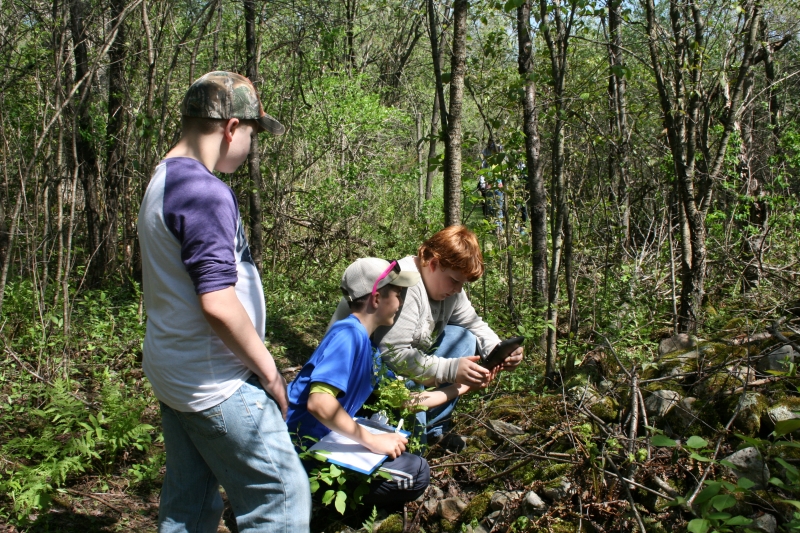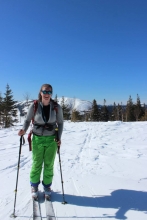
Young citizen scientists collecting data.
What is Citizen Science?
After a long North Country winter few sights and sounds are more welcome than signs of spring – the year’s first blooming crocus, the call of a red-winged blackbird, a chorus of spring peepers. Many of us post Facebook photos of daffodils and rivers rushing with snowmelt as a celebration of the seasons changing. But what if our observations of the natural world could also be useful to science? It turns out that around the world, millions of “citizen scientists” are joining up to turn their observations into valuable data.
The term “citizen science” is relatively new, but the practice has been around since before the 20th century, with amateur scientists, like Sir Isaac Newton, Benjamin Franklin, and Charles Darwin undertaking their own research. In fact, before professionalization, all science was citizen science. By the mid-20th century scientific research became dominated by university and government funded research labs, but scientists continued to reach out to the general public for assistance in larger projects.
The oldest and most well-known citizen science project is the Audubon Christmas Bird Count. The project began in 1900, and each year between December 14 and January 5, a group of volunteers lead by an experienced birder collects information about local bird populations. Today, there are more than 2000 such groups across the United States and Canada. According to the Audubon Society, data collected during the Christmas Bird Count “allows Audubon researchers, conservation biologists, wildlife agencies and other interested individuals to study the long-term health and status of bird populations across North America.” The Cornell Lab of Ornithology, a collaborator on the Christmas Bird Count and manager of 12 different avian citizen science projects, is also a major innovator in the citizen science realm.
Online networks and mobile technology have enabled an increase in the number of citizen science programs and participants by making it easier for people to collect and contribute data. The Citizen Science Alliance (CSA) is a collaborative effort of scientists, software developers and educators who create, manage and use online citizen science projects. Their mission is to involve the public in academic research by developing internet-based projects, helping scientists cope with an increasing flood of data and allowing for the public to share in the excitement of discovery. SciStarter and Scientific American provide online databases where potential volunteers can search for projects that interest them most.
There are also a number of global and nationwide science projects that have websites to help you learn how to take part. Participants in FrogWatch USA learn frog calls and report on frog species in their area. The project offers online and in-person training sessions before volunteers begin to collect data. iNaturalist is a user-generated catalogue of global biodiversity, that includes more than two million observations. Other citizen science projects involve monarch butterfly migration, counting fireflies, observing constellations in the night sky, and much more.
Participating in citizen science projects is a win-win-win for everyone involved. Volunteers learn how to make observations, collect data, and engage in research. Participation in citizen science helps develop critical thinking, physical, social, environmental, mathematical, and analytical skills. Citizen science also benefits the community as a whole. By engaging community members in monitoring the status of our shared natural resources like air, water, and forests, citizen science projects can promote stewardship of the resources on which our economies depend. Scientists and researchers benefit from citizen science as well. Many hands make light work when it comes to data collection; when more people contribute data, scientists can build a more robust picture of what is happening in the environment. Additionally, by calling on the help of many, scientists can build better understanding of and connections to communities for applying science that matters.

In St. Lawrence County, Nature Up North has started a couple of its own citizen science projects. The most basic project is called Encounters, through which local residents share photos and stories from their outdoor experiences in the North Country. The other project, Monitor My Maple, calls upon North Country residents to observe changes in local maple trees.
Stay tuned for our next article to learn more about citizen science in the North Country.
Armed with the knowledge of the importance of citizen science and how you can make an impact, we hope to see you at our upcoming Citizen Science Day hike. Then, get ready for Encounter Earth campaign on April 22nd, where you can share your outdoor observations, photos and stories!

